Is It Time to Consider Fake Grass?
http://decor-ideas.org 09/19/2013 22:20 Decor Ideas
Fake grass, you say? Don't scoff. Synthetic turf is moving beyond football fields and golf courses to become more common in home landscapes. I'll show you how this material can make sense in many home applications and even solve some landscaping problems that vex so many of us. Is it right for you? Find out here.
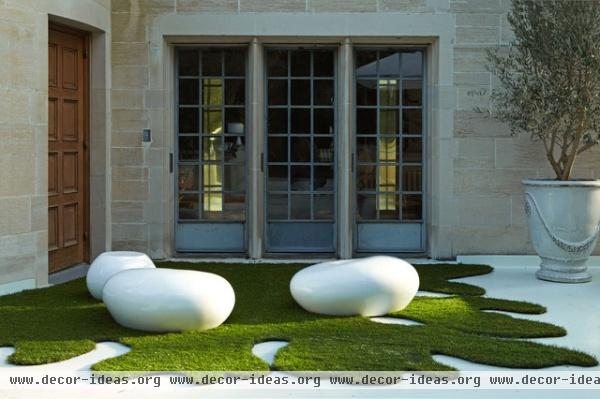
Where to use faux grass:
Home putting greensRooftop gardens that cannot support the weight of traditional lawnsAreas that have inhospitable conditions for growing real grassEasily cleanable areas for small petsWhere you want the look of grass without the maintenance and water bills of real grassAnywhere you want to reduce your carbon footprint
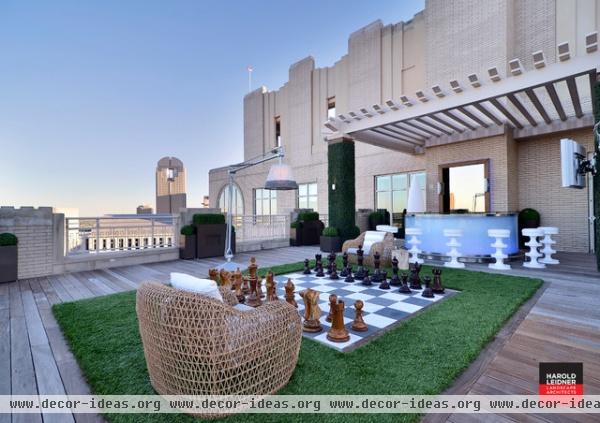
The Basics
Pros: Synthetic turf requires no mowing, trimming, watering, fertilizing or pesticides. It reduces your water bill, looks great year-round and is widely available for installation in most metropolitan areas. Very natural-looking types are available, making it almost impossible to tell fake grass from real grass unless it's closely inspected.
Cons: Faux grass is expensive and takes skill to properly install. The least-expensive types can look cheap and unnatural, so it pays to install the highest quality you can afford. It heats up quickly, so it may not be a great option for Southern climates with intense sunlight, unless it's installed in a shaded area.
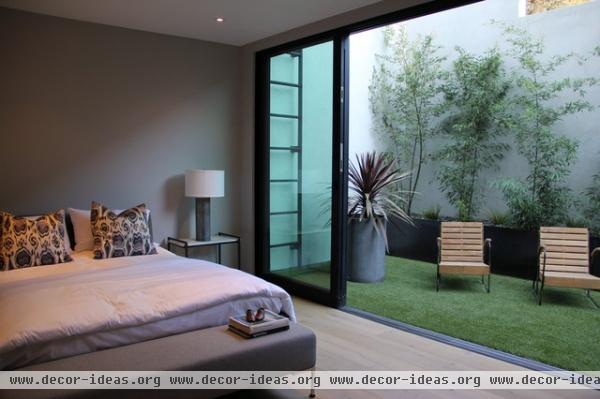
Cost: Faux grass is expensive, but in time you will recoup your investment with a lower water bill, fewer chemicals and less maintenance. Faux grass installed by a professional can cost up to $20 per square foot or more. The turf alone can cost anywhere from about $2 to $3 per square foot, but the total cost is much higher because of the extensive prep work. Consider using faux grass in smaller areas to achieve the best look.
Considerations: Synthetic grass comes in a wide range of quality — and in general, you get what you pay for. Look for a grass that has some brown blades blended in to make it look more natural, and always ask for recommendations from your installer. Homeowners who have strong DIY experience can take on a project like this in smaller spaces, but others should consider hiring a professional.
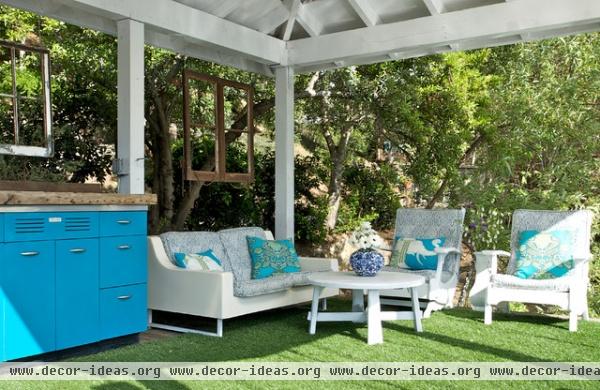
How to Install Synthetic Grass
1. Clear all the weeds, existing grass and plant material from the area. If you want to use equipment to make the job easier, use a sod cutter instead of a tiller; a tiller can disturb dormant weed seeds and create more of an issue down the road.
If you use a nonselective herbicide to kill off the existing lawn or weeds, use it responsibly and according to the package directions to avoid harming nearby plant material. Whichever method you choose, clear the area several days before installing your synthetic turf to make sure you've thoroughly completed this important first step.
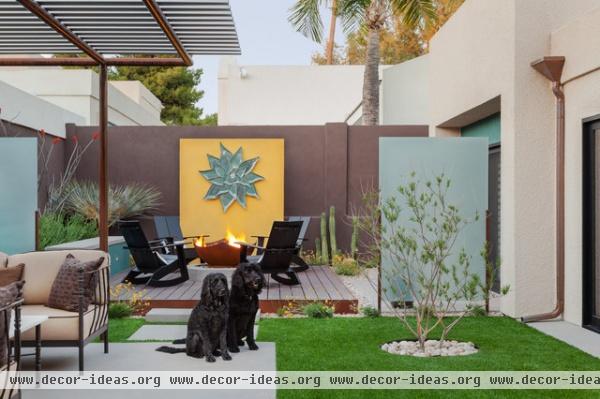
2. Add a 2- to 4-inch layer of crushed aggregate, such a decomposed granite (DG), over the entire area to create positive drainage underneath the synthetic turf. Consider your finished grade (the height of the ground) in these early steps to determine if further excavation of the area is necessary. You don't want your installed turf to sit higher than the surrounding area. Once you've spread the aggregate, use a water sod roller to flatten and level this base.
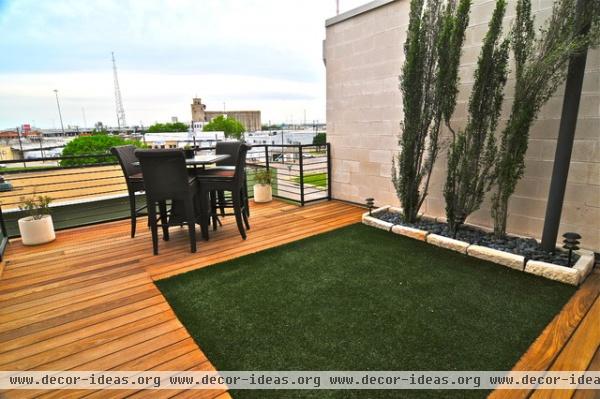
3. Install a 15- to 25-year weed barrier over the aggregate base, securing it with landscape staples (available at most home improvement centers). This is an important step — the last thing you want is weeds springing up through your new "lawn." Use the best-quality weed barrier fabric you can find, as lesser-quality fabrics do not perform as well over time.
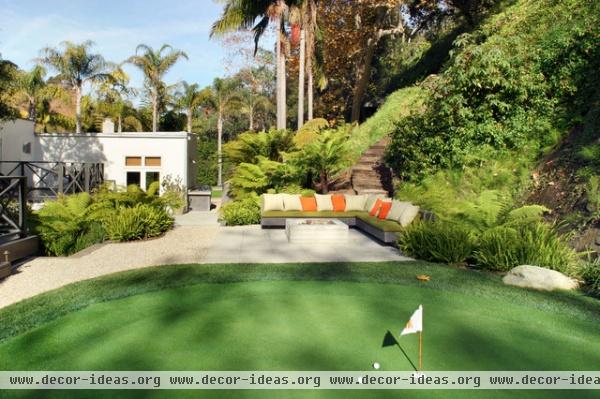
4. Roll your faux turf out to the area measurements. If you are using several pieces over a large area, be sure the pieces are all laid out with the blades going in the same direction. This attention to detail will make your finished product look more professional and polished. Cut the turf to fit your area using a carpet knife or a box cutter.
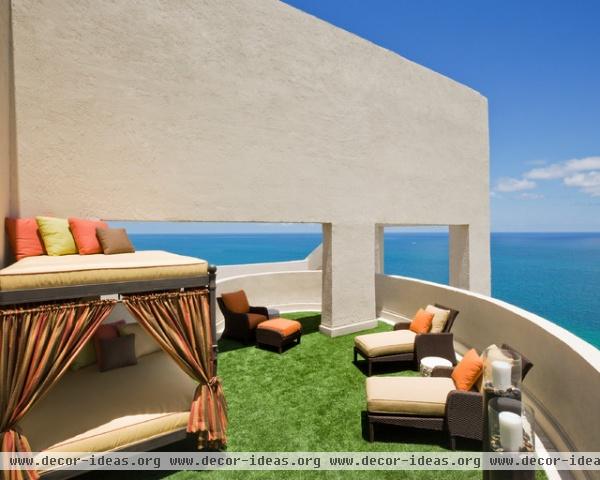
5. Seam the pieces together using 4 to 6 inches of indoor-outdoor carpet seaming tape according to the package directions, or use 6-inch landscape staples. Attach the turf to the aggregate base with 6-inch galvanized nails placed ½ to 1 inch in from the edge of the turf and every 4 to 6 inches along the perimeter of the turf. Start on one side so you can pull the turf tightly on the other side.
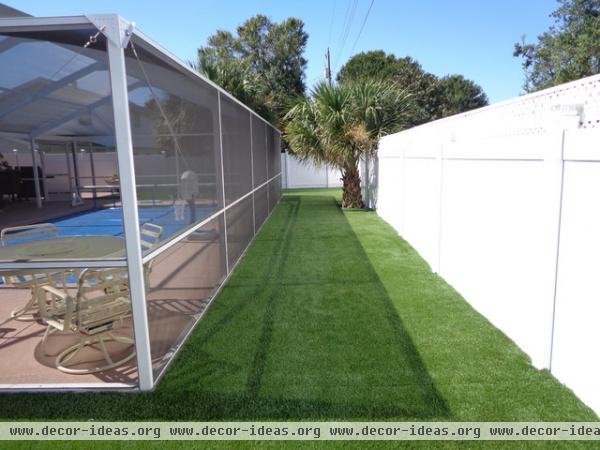
6. Apply an infill material (such as #30 sandblasting sand) with a drop spreader at a rate of 2 pounds per square foot. Sandblasting sand has been tumbled to remove sharp edges and has no harmful dust to inhale. After spreading the infill material, use a soft- to medium-bristled push broom to work infill into the turf, working against the grain of the turf. Brush evenly and with precision, getting the infill to the base of the turf fibers.
Do you have faux grass? Please let us know how it's working for you in the Comments.
Related Articles Recommended












